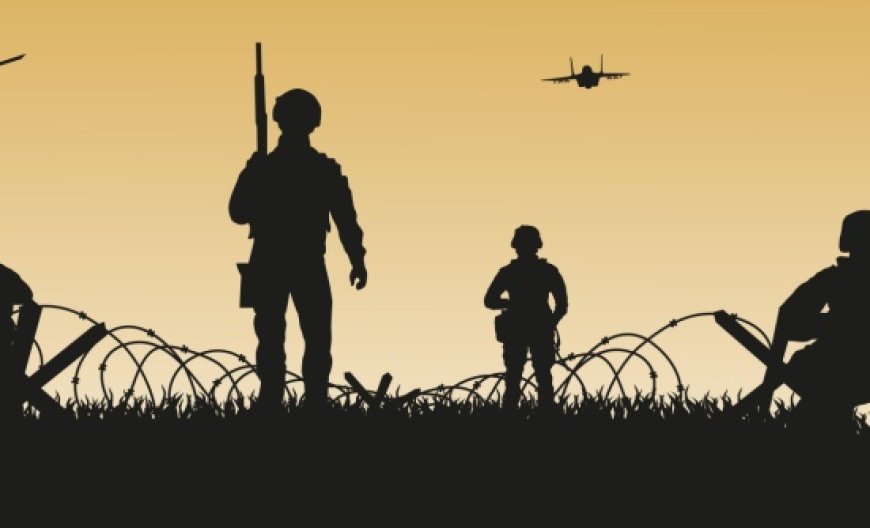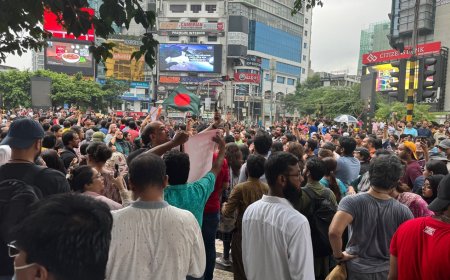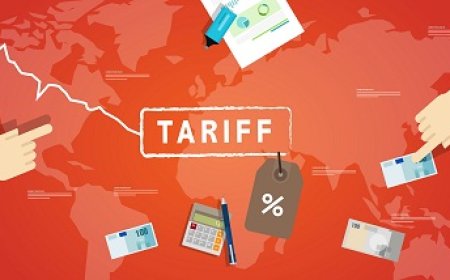Where War Turned to Wonder
Superpowers are increasingly reluctant to send their children into combat and expose them to trauma. This gradual shift has opened vast, hard-to-predict possibilities for new forms of warfare with their effects rippling outward like the countless waves of the sea.

Growing up in Kabul in the late 1980’s under the government of Najibullah, I became oddly accustomed to the sounds of war between the Russian soldiers and Afghan fighters.
The low drone of aircraft, the far-off reverberations of explosions, and the whir of helicopters were integral to my upbringing. The Afghan Mujahideens were fiercely engaged in combat with well-equipped Soviet forces.
Nevertheless, amidst the turmoil, there were instances of simple happiness and routine existence of a child. The markets, still filled with Russian merchandise, provided a serene sense of normalcy.
One of those small treasures for me was a beautiful Russian doll, my most cherished possession. Years later, as a law student gearing up for humanitarian law moot courts on armed conflicts, I found myself surrounded by reading materials concerning warfare.
One afternoon, weary from studying wars and legal conventions, I perused an old photo album.
There I appeared -- a young Bangladeshi girl in Kabul in the late 80s, clutching her beloved Russian doll, beaming as if the world outside was not engulfed in flames.
For a fleeting moment, two timelines converged -- my innocent past and my contemplative present. It prompted me to reflect: What missiles had the Soviet forces deployed during those years when I played beneath the same sky?
Soviet pilots carried with them the sharp edge of technological evolution -- the Kh-23 and Kh-25 (more refined version) missile families. Although they helped against fixed or point targets (buildings, vehicles) they were not ideal weapons for counter-insurgency in Afghanistan.
Lots of practical pitfalls made them of limited value against dispersed mujahideen forces in mountainous and dusty terrain. Russian pilots had to steer it manually, guiding its deadly flight through static-filled radio signals toward mountain ridges and mud-brick compounds.
Years later, long after the withdrawal from Afghanistan, Russia engaged in conflict in Ukraine, their missile technology had advanced with hybrid, multi-domain tactics that blended conventional invasion with irregular and information-based methods. This time, Russia used the Kh-31, Kh-59, and the hypersonic Kinzhal (Kh-47M2) missiles that use satellite signals, radar reflections, and pre-set targets over distances of hundreds of kilometers.
Missile strikes amplified the hybrid campaign by striking deep and standoff targets -- degrading Ukraine’s power, logistics and air-defense nodes, and forcing costly repairs and rerouting of supplies which multiplied pressure on both frontline operations and civilian resilience.
They also had strong psychological and coercive effects (disrupting services, lowering morale, shaping political will). For Russia, the main target was a strategic design -- the possibility of NATO’s expansion into Ukraine, right beside Russia’s geopolitical domain. For Moscow, this plan was interpreted not as a regional dispute but as an existential encirclement,
It is even more fascinating to follow the development of US missile technology. Throughout the Afghan and Gulf wars, American aircraft such as the F-15E Strike Eagle, F-16 Fighting Falcon, and B-52 Stratofortress were equipped with a new generation of missiles that transformed the nature of warfare.
The AGM-65 Maverick was capable of locking onto tanks or bunkers using infrared or television guidance -- a pilot’s fingertip precision taking the place of the traditional skill of manual control. The AGM-88 HARM, engineered to target enemy radar signals, neutralized air defenses before they had the chance to respond.
The Tomahawk cruise missile, launched from ships or submarines, traveled hundreds of miles at treetop altitude to accurately strike command centres with cinematic precision. These weapons exemplified America’s technological power in machines that could think, navigate, and strike with minimal human intervention.
The United States initiated the development of hypersonic weapons such as the Long-Range Hypersonic Weapon (LRHW, “Dark Eagle”), which is capable of carrying glide bodies over a thousand miles at speeds exceeding five times the speed of sound, along with the AGM-183A ARRW and DARPA’s HAWC, experimental air-launched systems that can manoeuvre unpredictably during flight.
It is equally significant to observe how China has accelerated its missile modernization program, blending indigenous innovation with selective technology. The DF-17 hypersonic glide missile showcases China’s ability to strike targets at unpredictable trajectories, while the DF-41 intercontinental missile rivals U.S. and Russian systems in both range and accuracy.
Rapid advances in physics, computing, and engineering have transformed how nations design and maintain nuclear weapons. Early atomic bombs depended on bulky fission technology, but modern warheads use miniaturized thermonuclear designs, allowing them to be fitted onto long-range missiles.
Supercomputers now simulate nuclear detonations, reducing the need for live testing while enhancing precision and yield control.
Globally, technology and artificial intelligence have transformed warfare into a realm that was once confined to science fiction. Drones now operate autonomously, directed by algorithms capable of identifying targets more swiftly than the human eye.
Small robotic dogs are deployed to carry cameras into perilous areas, while soldiers utilize augmented-reality helmets that provide real-time mapping of the battlefield. In outer space, satellites monitor troop movements and even forecast attacks through sophisticated data analysis. Furthermore, deep beneath the ocean, autonomous submarines navigate quietly, communicating via AI networks.
Warfare, which was previously conducted through physical strength and instinct, is now executed through code and computation -- ushering in an era where the next pivotal weapon may not be a missile, but rather an intelligent machine capable of processing information faster than its creator.
The triumph of technology and political and diplomatic strategies have changed the nature of warfare to a great extent. Wars could be fought with data, algorithms, financial plans, media, narratives, and ideology. Before the first missiles struck Ukraine in 2022, Russia had launched massive cyberattacks targeted Ukrainian government websites, banks, and energy systems.
Malware like “WhisperGate” and later “HermeticWiper” was deployed to erase data and cripple networks, leaving officials and civilians alike blind and disconnected.
When the United States wants to weaken a rival, it often reaches not for missiles, but for tariffs. During the trade war with China, Washington raised import taxes on Chinese goods. Factories slowed, exports dropped, and a new kind of battle unfolded -- one fought through prices and policies rather than troops. Sometimes, even allies of America’s adversaries felt the heat.
The most elusive front, perhaps, is the war of knowledge -- where information, scholarship, and intellectual networks are subtly steered to serve particular political visions, altering and directing the thoughts of millions.
Today, warfare has entered a profoundly cognitive form, where the battlefield lies within the human mind itself. The threat is no longer associated with a single identifiable entity. It has become hybrid from multiple actors, blurring the fixed lines between friends and foes.
In this changing environment, the true essence of warfare is found in the subtle arts of deconstruction, observation, co-option, diversion, and distraction in the precision of intelligence, the invisible diffused power to trigger regime change and articulating capacity of narratives constructed by multiple actors.
Propaganda has evolved into a data-driven science of influence, with algorithms curating realities and shaping public emotions through invisible digital architectures. The battlefield has shifted into the realm of the human consciousness, where confusion, fear, imagined community, and ideological division serve as strategic tools.
It is often the unconscious actors who become the most active tools in these types of wars they do not even know they are part of. Across the world, certain academics and thinkers are selectively elevated or sponsored by powerful institutions to amplify ideologies aligned with prevailing agendas.
The struggle is for control over perception, belief, and the construction of truth.
To understand the arts of modern conflict, we need to trace how memory, movements, political and social incidents, policy, markets, visions and ideas are interpreted and given political meanings.
The transformation of versatile styles of warfare carries significant psychological and political welfare consequences. On a psychological level, both individuals and societies are now vulnerable to unseen conflicts -- battles of perception, misinformation, and manipulation through the thoughts of both unconscious and conscious actors, processes and emotional reactions.
Returning to Afghanistan once more -- now under Taliban governance, a multifaceted opponent to multiple countries -- I pose the question: Do Talibans still represent the same type of danger they previously did?
Visible and invisible opponents of the Taliban have increasingly attempted to neutralize them by reconfiguring the Taliban into a collaborator or a controllable entity -- redefining them as an ambivalent partner to powerful countries against the more chaotic manifestations of violent extremism.
This strategy of reconfiguration is itself a novel form of warfare: ambiguous, covert, and not always overtly confrontational. While it may lessen bloodshed on the battlefield, it can incur significant costs -- for instance, the regression of women’s rights in Afghanistan, sacrificed in the name of stability.
Superpowers are increasingly reluctant to send their children into combat and expose them to trauma. They aim to mitigate direct assaults and neutralize adversaries through political, economic, and ideological strategies.
Ranging from targeted intellectual, political and financial incentives and diplomatic outreach to conditional aid and informational campaigns, these approaches strive to fulfill strategic objectives silently.
This gradual shift has opened vast, hard-to-predict possibilities for new forms of warfare with their effects rippling outward like the countless waves of the sea.
Dr Sharin Shajahan Naomi is a Post-Doctoral Fellow at School of Interwoven Arts and Sciences, KREA University in India.
What's Your Reaction?












































































